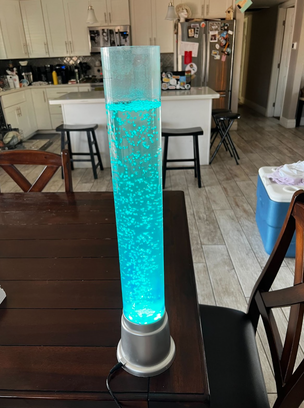 ONWRDS is a technology startup that focuses on optimizing supply chains. They plan to release numerous simple and effective technologies that will help suppliers address inefficiencies in their shipping and transportation. ONWRDS came to GreenLight Solutions because they are passionate about sustainability, and wanted to integrate sustainable practices into their business model. ONWRDS wanted to minimize their own and their clients’ impacts on climate change with carbon sequestration. More specifically, ONWRDS was interested in utilizing algae because it has the potential to sequester significant amounts of carbon dioxide at a relatively fast rate. While these features of algae technology are impressive, algae aren’t currently accessible to the average consumer in a convenient form. As a result,, ONWRDS intended to create an at-home algae bioreactor. ONWRDS wanted GreenLight Solutions’ to determine the carbon capture potential of an at-home algae bioreactor, and whether this type of device can count as a carbon offset.  Our team’s first objective was to calculate how much carbon could be captured from the bioreactor. We met with Dr. Bruce Rittmann, ASU professor and director at the Biodesign Swette Center for Environmental Biotechnology. Due to time constraints, we were not able to physically test the device; however, we obtained formulas from Dr. Rittmann and calculated the approximate carbon capture potential of the device. The bioreactor was found to sequester roughly 1.9 grams of carbon per day, a figure too low to make a significant impact. Knowing this, our team researched additional solutions for ONWRDS. Our second objective was to explore 4 carbon capture alternatives. Preliminary research focused on large-scale algae farms, typically upward of 3,000 acres, which capture a considerable amount of carbon. Although this option is capable of selling carbon offsets it is expensive and not accessible to the average consumer. Our other focus was on houseplants, an option that is more affordable but not capable of sequestering significant amounts of carbon. We discovered that peace lilies, prayer plants, snake plants, and ficuses were the most effective. However, they capture less than 1 gram of carbon per day. Furthermore, we researched the prospects of composting food waste instead of sending it to the landfill. In a landfill, food breaks down anaerobically, releasing methane as a byproduct, which is up to 80 times as potent as carbon dioxide. Composting, on the other hand, breaks down food aerobically and turns waste into products similar to soil or fertilizer. Although composting can reduce greenhouse gas emissions, it is difficult to measure and cannot be counted as a carbon offset. The last alternative we researched was forestry, an option that uses the power of trees to capture vast amounts of carbon. This option was viable for carbon offsets, but because of its scale, was not accessible to the average consumer. With this research, the team created a cost-benefit matrix that compares each technology based on a set of qualitative metrics. Red signifies low scores, and green signifies high scores. Based on our team’s research, we recommend that ONWRDS diversifies its carbon capture portfolio. A diversified portfolio will allow the company to reach each of its goals. If the company intends to officially offset its emissions, we recommend forestry. However, we recognize that carbon offsets through forestry are not accessible to most consumers. Therefore, to fulfill ONWRDS’ vision of spreading awareness about carbon emissions and algae technology, they should utilize a more accessible option (i.e., the at-home device). However, the at-home algae bioreactor is small-scale, and does not sequester a substantial amount of carbon. The device itself cannot be considered an offset and should not be marketed as such. On the other hand, the at-home device can educate consumers about algae sequestration technology and help inform consumers more aware of their carbon footprint. With this reminder of carbon technology in their home, consumers can make conscious decisions to improve their carbon footprint through behavioral changes (e.g., fossil-fuel-free transportation, meatless diet, and reduced energy usage).
Written By: Bryce Campbell|Madison Harris Bryce Campbell is a senior at Arizona State pursuing a degree in business and a minor in sustainability. Outside of GreenLight, he is a Renewable Energy Intern for Seaside Sustainability, focusing on analyzing state programs concerning the transition to cleaner energy. He enjoys finding ways to leave an impact on his local community and likes to play guitar and cook in his free time. Madison Harris is a senior at Arizona State University, studying business with a focus on sustainability and a minor in urban planning. This semester, she was a project lead at GreenLight for the ONWRDS project. Additionally, she conducts research as a Barrett Honors College Fellow at the ASU Grimm Lab, where she works to optimize public participation in planning sustainable futures. In general, she’s very interested in sustainable cities and how public-private sector collaboration can promote a more sustainable future for people and the planet.
0 Comments
Leave a Reply. |
Archives
July 2024
Categories |
|
RECEIVE GREENLIGHT NEWS
|
© GreenLight Solutions. All rights reserved.
|


 RSS Feed
RSS Feed